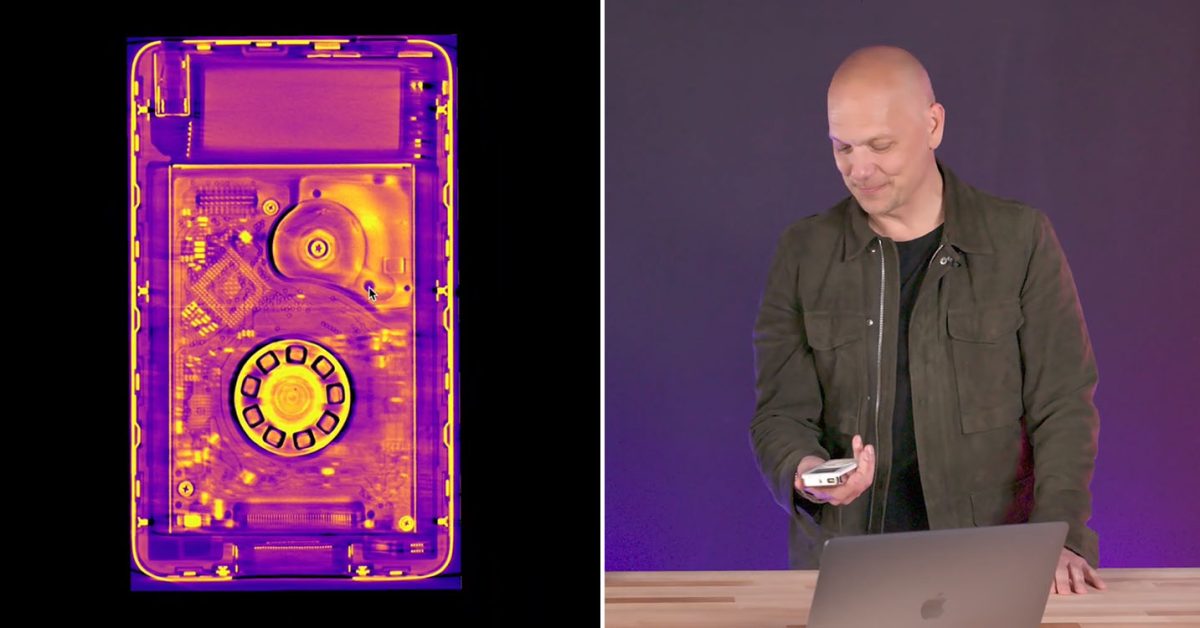Tony Fadell talks iPod design considerations, illustrated by CT scans

It’s not unusual to hear Tony Fadell talk iPod, but a 20-minute video provides a new perspective as it’s illustrated by CT scans of three different iPod models.
Fadell discusses a variety of design considerations. The team was worried about reliability as the consumers – who are not used to such delicate devices in portable products – may treat the iPod more casually that they would a laptop …
.
For this reason, design of the ‘bumpers’ designed to protect the drive from the shock of being dropped casually onto a table was a key consideration.
Similar to the control wheel. For the original model, they needed the bearings to allow free rotation without ‘rocking’ from side to side. When they switched to a clickwheel, then the team actively wanted that rocking movement.
Fadell talks with Lumafield. This company rents CT scanners to researchers and companies who do not have the budget or the funds to purchase them but only need one temporarily. Software is also available that allows remote scans (or later) to be explored, without having to access the machine.
Accessible CT for engineers. Add X-ray vision to your daily toolkit. Lumafield’s simple-to-use hardware combined with powerful cloud-based software can solve difficult problems throughout product development, including initial design and mass production.
Lumafield offers a deep look inside objects that allows you to view features previously hidden.
Lumafield’s Neptune CT scanner is designed to be part of your team’s essential engineering toolkit. It’s at home in an office or workshop and offers an easy-to-use, AI-driven interface that lets anyone run scans.
Lumafield takes the friction out of inspection with Neptune, a groundbreaking easy-to-use CT scanner paired with Voyager, powerful cloud-based software that solves problems from initial design through mass manufacturing.
Lumafield’s Voyager analysis program turns scans into actionable and quantifiable information. Visualize, analyze, and share your data in real time with nothing but a web browser.
As a promotional exercise, the company offers a ‘scan of the month’ microsite in which they share scans of everything from gadgets to lego figures.
Lumafield is also a company, that while in stealth-mode, decided the technology they were building was just too dang cool to keep quiet about.
ScanoftheMonth began as a scan of LEGO Minifigures. It was intended to satisfy a deep desire to share the magic and wonder of CT […]
This month we explore the evolution of the iPod from the inside out with our Lumafield Neptune CT scanner, guided by none other than Tony Fadell, the inventor of the iPod and the founder of Nest […]
Because the iPod engineering team had only eight months to pull the design together, the early prototypes left lots of room for optimization. The enclosure’s empty space can be seen in a CT scan. Steve Jobs famously dunked one in an aquarium, pointing to the air bubbles rising from the device to show that it could get smaller.
The scans explore the original iPod, a 6th-gen iPod Classic, and a 1st-gen iPod Nano. You can watch the video here.
Source: 9to5mac.com